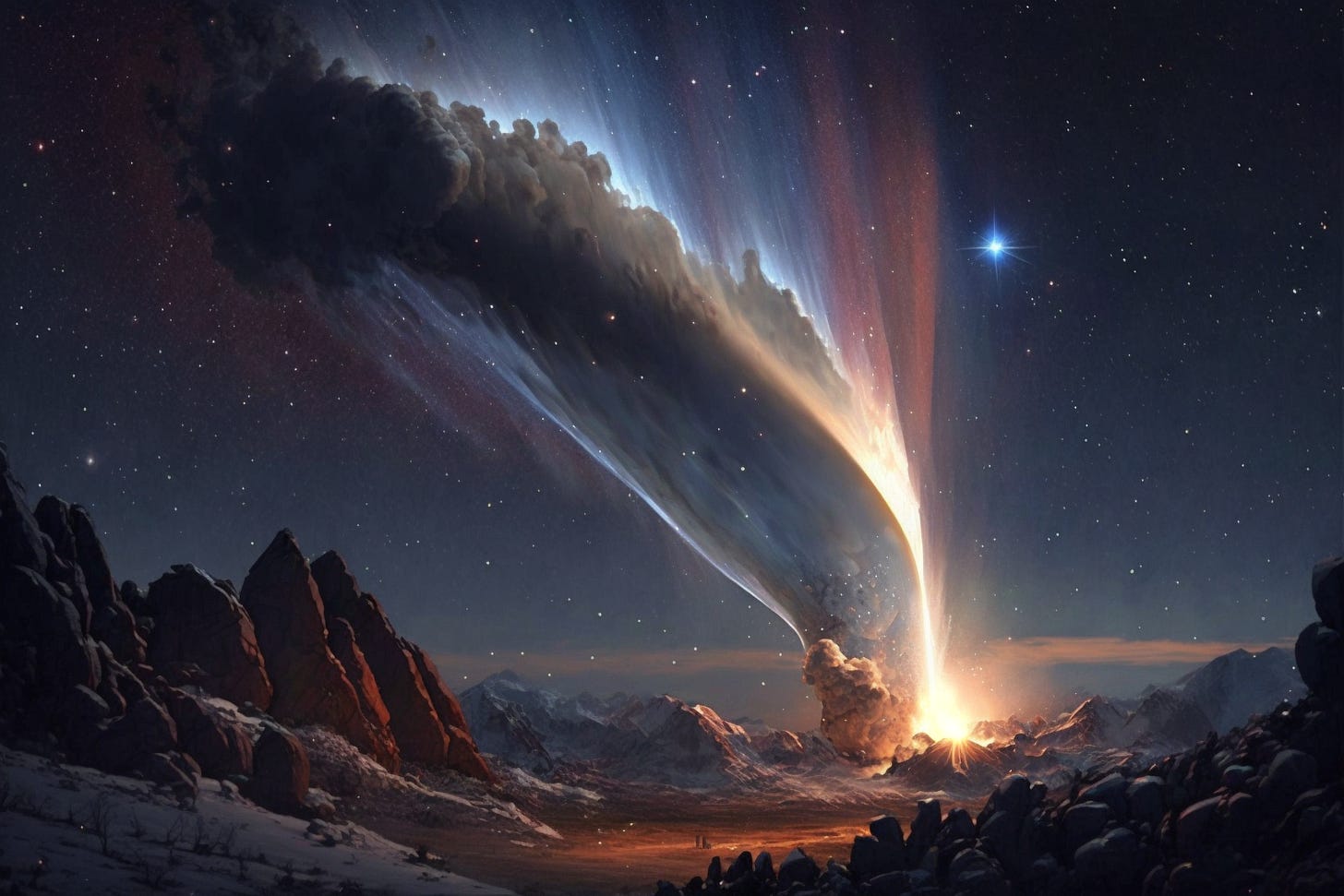What do we Know About Comets
Beyond the Bright Tail: Discovering the Composition, Formation, and Mysteries of Comets
Comets are some of the most fascinating and mysterious objects in our solar system. Most comets originate in either the Kuiper Belt or Oort Cloud—two regions located beyond Neptune’s orbit where billions upon billions of orbiting frozen bodies exist. These icy bodies, which travel around the sun, have long captivated astronomers because of their strange beauty and unpredictable behavior. In recent years advances in observation technology as well as closer-than-ever probes from spacecraft sent to explore comets has enabled scientists to learn more about these enigmatic cosmic visitors than ever before.
First off, there is much speculation on what exactly comets consist of but it is commonly accepted that a comet nucleus (or “dirty snowball”) consists mostly of dust particles mixed with gasses like carbon dioxide or methane frozen solid into ice crystals. This mix gives them their characteristic bright tails when they pass close enough to the Sun for vaporization events to occur due to heat exposure – often referred to corresponding shooting stars seen every now and then near Earth’s atmosphere – also known by its technical term sublimation. The size range between active cometary nuclei varies significantly; ranging anywhere from a few meters up to several kilometers wide at times.
As far as composition goes: A general consensus within the scientific community suggests that two thirds roughly speaking, would be composed mainly of water while the rest could potentially either be organic matter including amino acids necessary for life formation, silicates such as metals like iron and magnesium amongst others less abundant elements, found right here on Earth too.
Besides making visible spectacles in the sky above us, however, it's important to recognize comets’ contribution to our greater understanding of the Solar System’s origins. This work is still ongoing today, and data from the studying of comets will provide valuable insight not only into conditions planets experienced during development stages but many secrets regarding the structure of unseen parts of space.
The time it takes for a comet to orbit around the sun depends on its size as well as its distance from the Sun. The average orbital period ranges between 200 years to thousands or even millions of years in some cases.
The most famous comets have relatively short periods compared to other smaller ones; Halley’s Comet has an orbital period of 75-76 Earth years while Encke's Comet circles in just 3.3 Earth Years.
On the longer end, Hale–Bopp has an orbital period exceeding 2600 earth years – one full revolution would take over two millennia! However, these larger objects move more slowly than their smaller counterparts due to gravitational forces acting upon them beyond our solar system which can add additional “drag” onto their already long journey. This means that some comets may actually take much longer (upwards of 10 million+ years) before returning back into view again after completing another roundabout path near distant stars far away from us here at home on planet earth.
Generally speaking though, most long period cometary orbits will have speeds ranging anywhere from 5 km per second up until 25 km per second depending on exactly what compromises are made between all influencing forces acting upon these tail bearing snowballs traveling through space.
The prospect of life on a comet has been debated for centuries, with scientists unable to reach a definitive conclusion.
Comets can contain organic compounds such as carbon dioxide, methane or ammonia which could support some forms of microbial life if conditions were right – but these substances exist at very low levels within comets meaning it is unlikely there would be enough resources available to sustain an ecosystem over any length of time.
Most cometary surfaces experience temperatures ranging between minus 100 degrees Celsius and plus 100 degrees Celsius making survival difficult even under optimal circumstances.
Additionally solar radiation damage caused by direct exposure also poses another challenge leading many researchers to believe that known forms of terrestrial based organisms wouldn’t survive outside Earth’s atmosphere regardless of how hospitable they found the environment inside the comet itself.
That being said, recent scientific research into ‘extremophiles' suggest certain species may be able withstand harsher environments than we previously thought possible; potentially providing insight into what type/if any form extraterrestrial based microbes exists elsewhere beyond our own planet.




